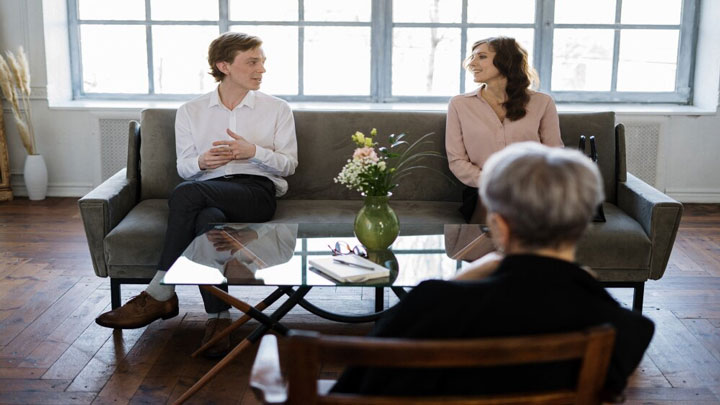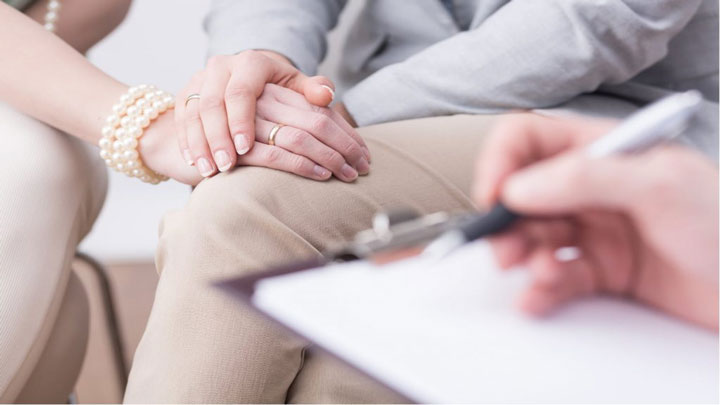Most psychology essays encourage our autonomy, individual independence, and self-reliance. These are the correct values, but they may make us misunderstand that we don’t need others, that we can always stand on our own feet, and that our attachment to others is a sign of weakness. But the reality is something else. We humans, both in childhood and adulthood, need someone we can rely on in times of difficulty. This need, which has evolutionary roots, allows us to survive. Our need for attachment and emotional connection with others may be met in unhealthy ways. In this case, many problems arise in our passionate relationship. This is where the emotion-oriented approach in couple therapy comes to our aid. This approach aims to modify attachment styles and teach healthy ways to respond to this need. If you want to know about this approach, its implementation methods, and its effectiveness, stay with us until the end of the article.
What is emotional therapy?
Emotion-focused therapy (EFT) is a type of short-term couples therapy. Instead of methods such as behavioral therapy, this approach uses emotions and feelings to strengthen the emotional bond of couples. Dr. Sue Johnson and Les Greenberg developed this method through extensive research on love and attachment.
Although this method is mainly used for couples, it also has applications to strengthen the attachment between family members.
Principles of emotional therapy
1. Attachment theory
Attachment is a basic need from the beginning to the end of life. This need is rooted in our evolutionary process. John Bowlby, a British psychologist, was the first to notice the importance of this need and conducted numerous types of research on it. According to his attachment theory, children’s affectionate contact and emotional bonding with valued others are as important as nutrition and physical needs. This need continues in adulthood. No matter how independent and strong we are as human beings, we still need another comforting shoulder to get through difficult situations. As its founder says, the emotion-oriented approach is based on attachment theory.
2. Communication styles
According to research, certain communication styles, such as the stalker-distancer style, lead to relationship problems. In this pattern, one of the parties looks for the other to blame or criticize him. The other is running away and avoiding the situations that lead to this happening. The follower is looking for communication, and the distance is looking for the need to maintain self-worth and respect.
This is just one unhealthy communication pattern that leads to relationship tension and conflict. Based on the mentioned example, trying to understand these patterns in an emotion-oriented approach and replacing them with healthy communication styles is one of the main goals of the treatment period.
For whom is emotionally helpful therapy?
The emotion-oriented approach can be used for couples with problems such as tension, conflict, and poor interaction. This method increases a person’s ability to deal with emotional issues in the individual sphere. In the family, emotive therapy can strengthen the emotional bond between members.
Emotion-focused couple therapy is suitable for couples who have one or both of the following problems:
- addiction;
- depression;
- Chronic Diseases;
- post-traumatic stress disorder ;
- Betrayal or other traumatic events in the past or present.
The emotion-oriented approach can be used for all types of couples. Also, this method has been tested in different cultures worldwide and has proven its effectiveness.
Benefits of emotional couple therapy

1. Better emotional functioning
An emotion-focused approach teaches couples how to attach securely to each other. By determining relationship milestones, this method leads teams to use these situations to strengthen love. The main goal of this treatment method is to teach couples appropriate emotional responses so that each of them learns how to respond to each other’s needs in different situations appropriately. These actions and emotional reactions lead to the strengthening of love and attachment between couples.
2. Strengthen the emotional bond
Emotional therapy is based on attachment theory. The attachment theory is also based on the fact that people need a helper to get through the inevitable sufferings of life to rely on them emotionally. Therefore, the emotion-oriented approach strengthens the secure attachment between people by supporting their emotional bonds.
3. Strengthen mutual understanding
Emotion-oriented therapy increases people’s ability to understand the other party’s needs. As a result, instead of using ineffective methods such as anger to express their needs, people use empathic methods to speak and listen to their needs and relationship problems. With this approach, unwanted and harmful reactions to the relationship are identified, and efforts are made to replace them with healthy responses.
What techniques are used in emotional couple therapy?
Changing behavior with an emotion-oriented approach is done in 3 stages, which we will examine below.
1. De-escalation
This stage includes identifying negative communication patterns between couples, identifying negative emotions related to attachment problems, and changing them. During this stage, the team realizes their insecurities and fears damage the relationship. They understand that inappropriate behaviors such as aggression and anger are a form of protest against the lack of communication and emotional support in the connection. Therefore, couples learn to show empathetic actions and healthy emotional reactions instead of these inappropriate behaviors and be emotionally available and supportive of each other so that a secure attachment is formed between them.
2. restructuring
At this stage, each party learns to share their deep emotions and needs and be receptive to them. This is a step towards understanding each other’s emotional needs. In this process, an effort is made to reduce the intensity of the couple’s conflict and strengthen emotional bonds.
3. Consolidation
Finally, the therapist helps the couple learn new communication and emotional response skills and implement them in the relationship. This step shows the couple how they can strengthen solidarity and prevent conflict by changing their behavior. New and healthy methods of communication replace inappropriate practices such as aggressiveness and defensiveness. Once returned, these healthy habits are reinforced through repetition until they become established. Now, couples use them in their life together without the need for the intervention of a therapist. As a result, their love is strengthened, and life together becomes a safe place for both people.
The effectiveness of the emotion-oriented approach
Emotion-oriented approach as a therapeutic method has many strengths and effectiveness. First, much research has been done about the point of this method. Many researchers have confirmed the efficacy of this method for more than 35 years. There is a strong correlation between what this approach predicts and what happens. In other words, the theoretical prediction about the effect is consistent with the empirical evidence.
For example, in one of these researches in 2019, a comprehensive review of clients showed that emotional couple therapy has increased couples’ satisfaction with their life together. Interestingly, this treatment method is more stable and minimizes the possibility of problems returning.
Second, this method is based on cooperation and respect for clients. Instead of blaming the couples, this approach considers the communication patterns between them to be the cause of the breakdown of the relationship.
Criticisms of emotional therapy
Due to the high effectiveness of this method, there is not much criticism of the British approach’s principle, and most paints are about possible defects in the treatment process. Proponents of the emotion-oriented approach claim that the emotional stimulation of clients and the creation of new memories based on new emotional experiences is the key to change in this treatment. But Bruce Ecker, the founder of integrative therapy, believes that learned emotional responses can be forgotten without emotional stimulation. In other words, Aker points to a flaw in the emotion-oriented approach that can cause the treatment process to fail.
Other experts have other criticisms of this way. For example, one of these criticisms is the weakness of emotion-oriented therapy in predicting factors affecting treatment outcomes. They point out that the emotion-oriented therapy theory does not explain the root of mental problems and what causes them to persist.
How does the couple therapist use the emotion-oriented approach?

The therapist examines the couple’s emotional communication patterns. Then, as a coach, he teaches new methods for interaction and emotional response to each party. Unlike other treatment methods, the therapist has a more active role in the treatment process. With his educational interventions, he identifies unhealthy ways of communication and teaches couples to replace them with healthy habits.
Therapists show more empathy in EFT Therapy. They teach couples to acknowledge their feelings and emotions and understand hidden patterns in the relationship that lead to conflict and tension.
In the emotion-oriented approach, the treatment process occurs mainly during the sessions and in the therapist’s presence. This is in contrast to other methods that are often followed by homework.
Things you should know about emotional therapy
If you plan to start this treatment method with the help of a specialist, you should pay attention to these points:
- Because the emotion-oriented approach identifies our negative emotions and feelings, this can be difficult and challenging for you. During the treatment period, you will face negative and stressful emotions. It would be best if you did not think the treatment process would be simple and easy.
- For effectiveness, both parties must enter the treatment process. If one of the couples does not want to step on this path, the energy will decrease.
Warning! This article is only for educational purposes; to use it, it is necessary to consult a doctor or specialist.



